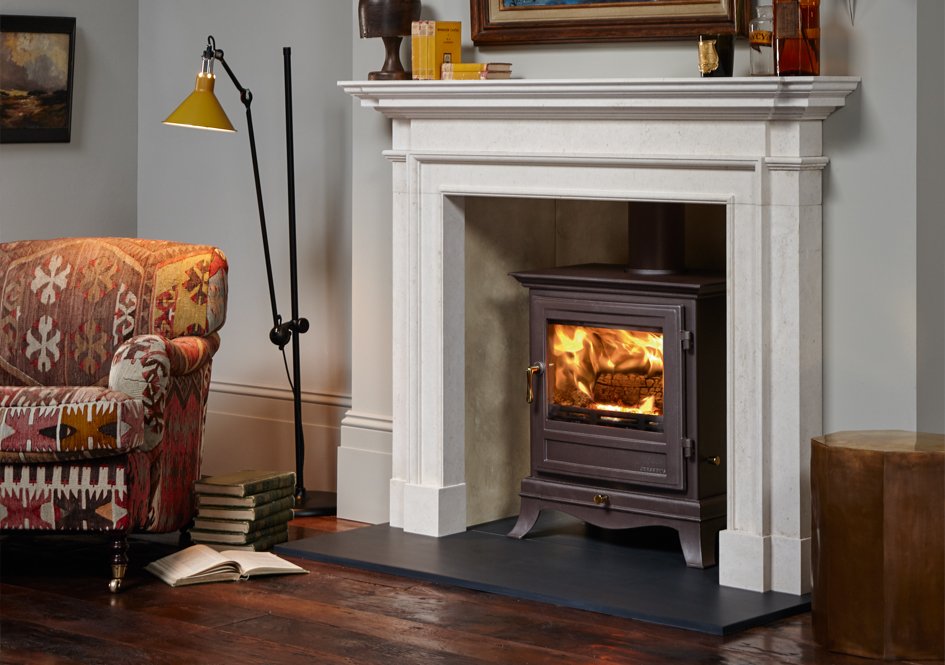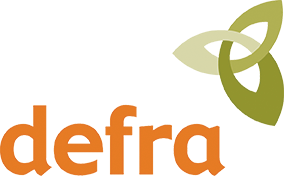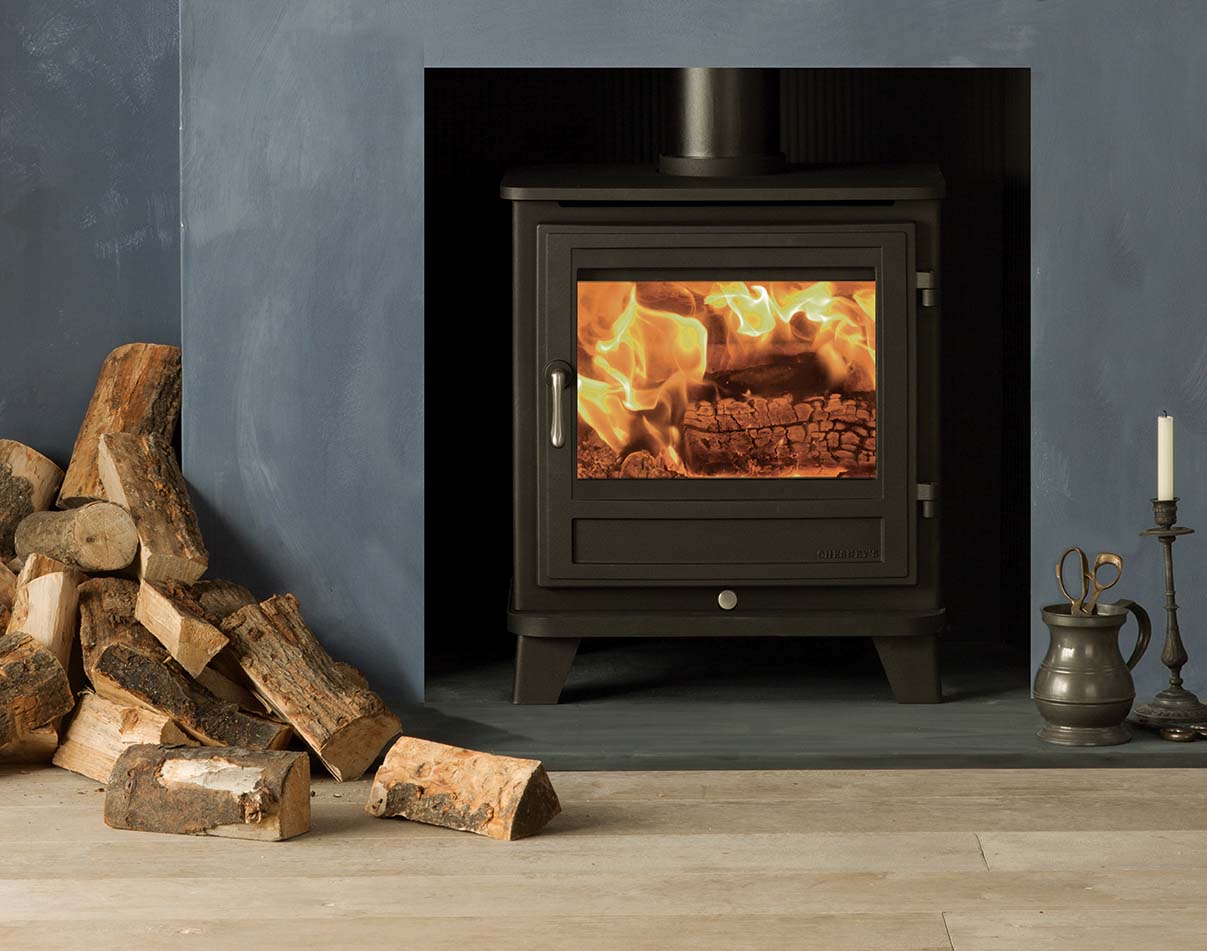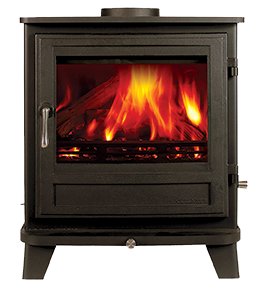

No, wood burners are not going to be banned in the UK.
However, new regulations did come into effect in 2022 that require all new wood burning stoves to meet certain environmental standards in an effort to reduce harmful emissions. Keep reading to find out what these regulations are, and how they might affect you if you’re looking to buy a new wood burner.
Wood burning stove regulations in the UK
New wood burning laws came into effect in the UK on 1st January 2022 as part of the government’s Clean Air Strategy, with the goal of reducing air pollution and reaching net-zero carbon dioxide emissions by 2050.
As of this date, it is now illegal to manufacture or sell a wood burning stove that doesn’t meet Ecodesign regulations. This means that all newly manufactured wood burners will need to adhere to these rules, and carry an approved Ecodesign Ready Stove quality assurance certification.
All stoves that were installed before 1st January 2022 are exempt from these new regulations, so if you purchased a wood burner before this date you don’t need to worry. You will still be able to use your stove – though you’ll need to make sure you’re only burning dry wood, as wet logs produce more harmful emissions. Look for wood with a ‘Ready to Burn’ label, which means it has a moisture content of less than 20%.

What is an Ecodesign stove?
Ecodesign is a European-wide initiative designed to lower emissions and improve air quality.
A wood burning stove that is approved as Ecodesign Ready has been independently tested to ensure that it meets the requirements for air quality and particle emissions. Stoves are tested on various points, including their levels of carbon monoxide, nitrogen oxides and particulate matter.

What are DEFRA exempt wood burning stoves?
DEFRA exempt wood burning stoves are stoves that have been approved to burn specific fuels in a smoke controlled area. They are designed to prevent smoke from being emitted, making them less harmful to the environment
DEFRA stands for the Department for Environment, Food & Rural Affairs, which is the branch of government responsible for tackling air pollution and reducing emissions. A DEFRA exempt stove is needed if you live in a smoke controlled area, where you are only permitted to burn smokeless fuels. If you live in one of these areas and your stove is not DEFRA approved, you could face a heavy fine.
At Chesneys we are committed to making our products as environmentally friendly as possible, so all of our stoves are DEFRA exempt for use in smoke controlled areas. The clean-burn and air-wash technology used by all our stoves means that any pollution by-products are reignited and burnt again in the stove, instead of passing through the chimney. This double combustion substantially reduces emissions, and allows our stoves to safely and legally be used anywhere in the UK.
Are wood burners environmentally friendly?
Thanks to the new Ecodesign regulations, all log burners should now be environmentally friendly. This means that you can enjoy the many benefits of a wood burning stove (such as efficiently heating your home) without causing any harm to the environment.
All Chesneys wood burning stoves have been independently verified as Ecodesign Ready by an approved laboratory, exceeding the strict emissions and efficiency criteria. Our stoves combine all the appeal of a traditional model with clean and innovative modern technology, producing high quality and reliable wood burners.
By choosing an Ecodesign compliant stove from Chesneys, you will benefit from superior performance and lower emissions – as well as a charming new addition to your fireplace.
How to reduce carbon emissions
Knowing how
to properly and effectively use your wood burning stove will ensure that it stays eco-friendly, reducing the risk of any harmful emissions. With that in mind, here are some tips on how best to use your stove.
Only burn dry logs

Wet logs require more energy to burn and therefore produce far more harmful emissions, so make sure you only burn dry wood. Wood with a ‘Ready to Burn’ label is the safest option, as this means it has a safe moisture content of less than 20%.
You could also purchase a moisture meter to check the moisture content of your logs before burning, for some extra peace of mind.
Maintain plenty of air flow
When lighting your wood burning stove, you should always fully open the air control to increase the oxygen supply. Fire needs plenty of oxygen to burn well, so maintaining a good level of air flow will ensure efficient burning and minimal harmful emissions.
Clean your stove regularly
Each time you use your wood burning stove, the fire leaves behind build-up and residue in both the stove itself and the chimney. Over time, this can clog your chimney and reduce the stove’s efficiency, resulting in more harmful emissions.
To guarantee optimum efficiency and minimal negative output, you should regularly clean your stove and chimney.

